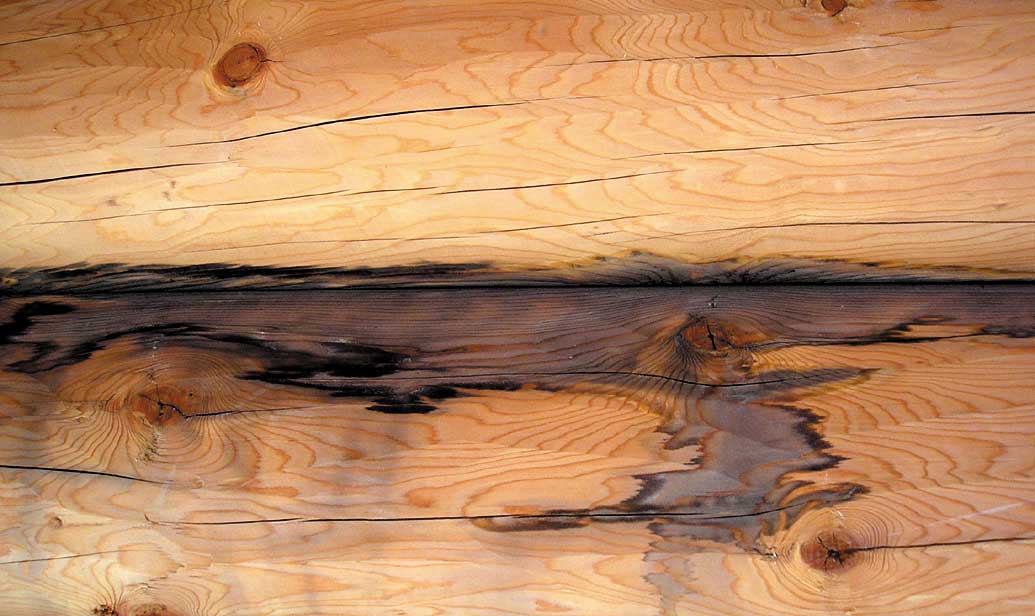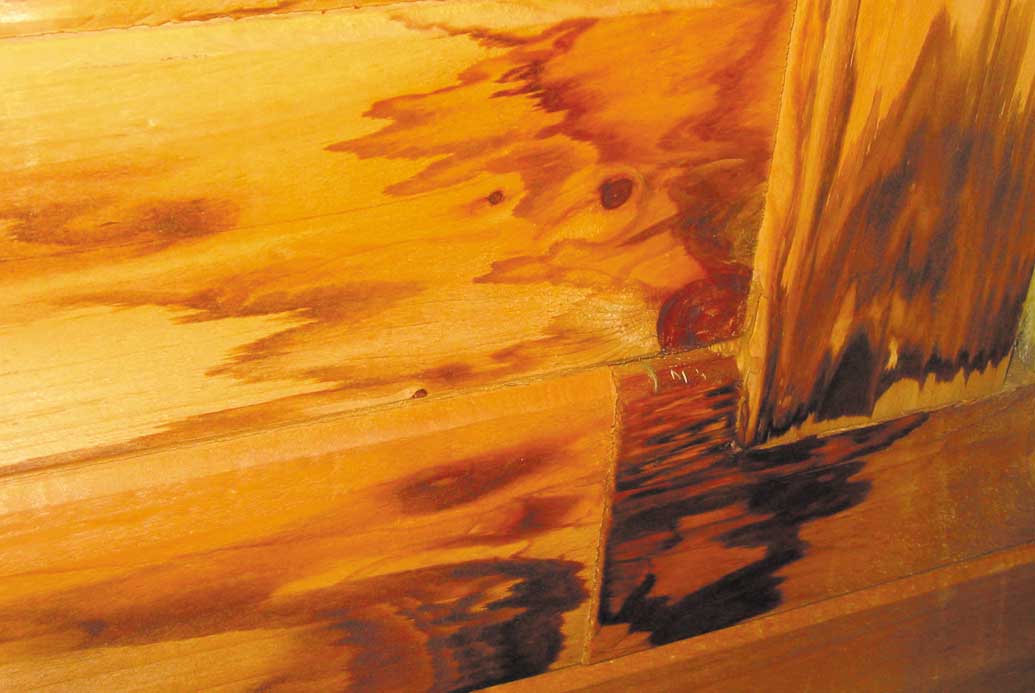Some of the most challenging discolorations on wood are water stains. They can run the range from light brown to jet black and can appear on both interior and exterior surfaces. How do water stains form? All wood contains a number of components that are grouped under the category of “water-soluble extractives.” In other words, they can dissolve in water and as the water within the wood evaporates, they can be carried along to the surface. Generally, if wood is exposed to water for only a brief period of time, the water does not get a chance to penetrate deep into the wood and dissolve these water-soluble components. However, if the wood is exposed to water for days, weeks or months, the water can pick up a high concentration of these components and deposit them on or near the surface of the wood.
Exterior water stains typically occur around checks, fissures and other openings that collect rain water. The water soaks into the wood and as it evaporates out of the wood it brings along the colored extractives which can then become visible on the surface. In some cases water-soluble tannins may react with minute particles of steel on the surface forming dark, iron tannate stains. This process may occur on bare wood or under an existing finish. Interior water stains typically develop during construction before the home is sealed or from an ongoing water leak. They can be particularly ugly and may cause a lot of distress.
Always cure or mitigate the cause of the water stain before treating the water stain. There might not be much you can do about stains coming from inside the wood, but you can stop leaks, seal checks, and route water away from sitting on wood.
Getting Rid of Water Stains
The first step in determining a course of action is to find how deep the stain goes into the wood. Remove about a 1/16” thick sliver of the discolored surface with a sharp knife and if the discoloration comes off with the sliver, the discoloration can usually be sanded off or treated with products like Log Wash, Wood ReNew or Oxcon. Since there are a number of components involved with water stains, it's impossible to predict which product will work best. We recommend starting with Log Wash and if that does not work, move to Wood ReNew and finally Oxcon.
The issue is that the wood stains are so varied, even these products don't always work, leaving sanding as the only solution. If the discoloration goes deep into the wood and is still visible after the sliver of wood is removed, it will be virtually impossible to either sand or chemically remove the water stain. In this case there are only two options, either replace the discolored wood or hide the stains.
"Hiding" Water Stains
Although Perma-Chink Systems manufactures and sells transparent finishes, some of our colors are fairly pigmented which gives them some hiding power. On interior bare wood surfaces, Butternut color is a good choice since it is very close to the color of bare white pine. It may take several coats depending on the darkness of the discolorations.
If a colored stain is going to be applied later, it would be a good idea to first use Prelude over the entire wall to even out the absorption of the stain and obtain a uniform color. The best way to hide exterior water stains is to use a dark colored finish like Walnut or one of our gray colors. If this is not to your liking, you can try using the same hiding procedures as stated for interior stains but on exterior walls the opaque finished areas tend to be more pronounced than on interior surfaces.
